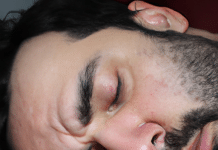Have you ever experienced sudden and uncontrollable bouts of sleepiness? Or perhaps you’ve had a friend who seemed to nod off in the most unlikely of circumstances. Well, you might be familiar with a condition called narcolepsy. Narcolepsy is a neurological disorder that affects the brain’s ability to regulate sleep-wake cycles, leading to excessive daytime sleepiness and potentially disruptive episodes of sleep attacks. In this article, we will explore the fascinating world of narcolepsy, its symptoms, causes, and available treatment options. So, if you’ve ever wondered what narcolepsy is all about, buckle up and join us on this journey into the mysterious realm of sleep disorders.
Review contents
Overview
Narcolepsy is a neurological sleep disorder that is characterized by excessive daytime sleepiness and a sudden loss of muscle control. It affects a significant number of individuals worldwide and can greatly impact daily life. Fortunately, with proper diagnosis and management, individuals with narcolepsy can lead fulfilling lives.
Definition
Narcolepsy is a chronic neurological disorder that affects the brain’s ability to regulate sleep-wake cycles. It is characterized by excessive daytime sleepiness, sudden loss of muscle control (known as cataplexy), sleep paralysis, and vivid hallucinations upon falling asleep or waking up. These symptoms can greatly affect an individual’s daily functioning and quality of life.
Prevalence
Narcolepsy is estimated to affect approximately 1 in 2,000 individuals worldwide, although the exact prevalence may vary among different populations. It typically begins in adolescence or early adulthood but can also develop in childhood or later in life. Despite its prevalence, narcolepsy often goes undiagnosed or misdiagnosed, resulting in delays in receiving proper treatment.
Symptoms
The main symptom of narcolepsy is excessive daytime sleepiness. Individuals with narcolepsy often struggle to stay awake, even after getting an adequate amount of sleep at night. They may feel an overwhelming urge to nap throughout the day, which can be difficult to resist. Other common symptoms include sudden loss of muscle control (cataplexy), sleep paralysis, and vivid hallucinations. These symptoms can significantly impact an individual’s ability to carry out daily activities.
Causes
The exact cause of narcolepsy is still not fully understood. However, several factors have been identified as potential contributors to the development of this disorder.
Genetic Factors
Genetics is believed to play a role in narcolepsy. Researchers have found certain genetic variations that are more commonly found in individuals with narcolepsy. While having these genetic variations increases the risk of developing narcolepsy, they are not the sole cause of the disorder. More research is needed to fully understand the genetic links to narcolepsy.
Brain Chemistry
Narcolepsy is associated with alterations in brain chemistry, particularly involving the neurotransmitter hypocretin. Hypocretin helps regulate wakefulness and sleep, and its deficiency in individuals with narcolepsy may contribute to the disorder. The exact reasons for the depletion of hypocretin remain unclear but may involve autoimmune factors.
Autoimmune Disorders
There is evidence suggesting that narcolepsy may have an autoimmune component. Several studies have found that individuals with narcolepsy often have specific antibodies that attack the hypocretin-producing cells in the brain. This autoimmune response may contribute to the depletion of hypocretin and the development of narcolepsy.
Types of Narcolepsy
There are several types of narcolepsy, each with its own unique characteristics and symptoms.
Type 1 Narcolepsy
Type 1 narcolepsy, also known as narcolepsy with cataplexy, is characterized by excessive daytime sleepiness, cataplexy, sleep paralysis, and hallucinations. Cataplexy is a sudden loss of muscle control triggered by strong emotions, such as laughter, excitement, or anger. It can range from mild muscle weakness to complete collapse.
Type 2 Narcolepsy
Type 2 narcolepsy, also known as narcolepsy without cataplexy, lacks the symptom of cataplexy. However, individuals with type 2 narcolepsy still experience excessive daytime sleepiness and may have other symptoms such as sleep paralysis and hallucinations. Type 2 narcolepsy is often misdiagnosed or overlooked, leading to delays in proper treatment.
Secondary Narcolepsy
Secondary narcolepsy refers to cases where narcolepsy symptoms are caused by a known factor, such as head trauma, brain tumors, or certain medications. Treatment of the underlying cause may help alleviate the symptoms of secondary narcolepsy.
Diagnosis
Proper diagnosis of narcolepsy involves a thorough evaluation of an individual’s medical history, sleep patterns, and symptoms. This is typically done by a sleep specialist or a neurologist with expertise in sleep disorders. Several diagnostic tests may be used to confirm the presence of narcolepsy.
Medical History
A detailed medical history is crucial in diagnosing narcolepsy. The healthcare provider will inquire about the onset and progression of symptoms, sleep patterns, and any possible triggers or factors that may contribute to excessive sleepiness. They may also inquire about family history, as narcolepsy has been associated with genetic factors.
Sleep Studies
Polysomnography (PSG) and multiple sleep latency tests (MSLT) are commonly used to diagnose narcolepsy. PSG involves monitoring brain activity, eye movements, muscle activity, and other physiological parameters during sleep. MSLT measures the time taken to fall asleep during daytime nap opportunities. In narcolepsy, PSG and MSLT can reveal specific patterns indicative of the disorder.
Other Diagnostic Tests
In some cases, additional tests may be conducted to rule out other conditions that may mimic narcolepsy symptoms. These tests may include blood tests, genetic testing, or imaging studies of the brain.
Treatment
While there is currently no cure for narcolepsy, treatment aims to manage symptoms, improve wakefulness, and enhance overall quality of life. Treatment plans are tailored to each individual and may involve a combination of medication, lifestyle changes, and supportive therapies.
Medication Options
Stimulant medications, such as modafinil and methylphenidate, are commonly prescribed to promote wakefulness and reduce daytime sleepiness. Sodium oxybate, a central nervous system depressant, may be used to improve nighttime sleep and reduce cataplexy episodes. Other medications, such as antidepressants and selective serotonin reuptake inhibitors (SSRIs), may also be prescribed to manage specific symptoms.
Lifestyle Changes
In addition to medication, making certain lifestyle changes can help individuals with narcolepsy manage their symptoms effectively. Establishing a consistent sleep routine, maintaining a comfortable sleep environment, and practicing good sleep hygiene can improve overall sleep quality. Regular exercise, stress management techniques, and avoiding excessive caffeine or alcohol intake can also contribute to better daytime wakefulness.
Supportive Therapies
Supportive therapies, such as cognitive-behavioral therapy (CBT) and counseling, can provide valuable support and education to individuals with narcolepsy. These therapies can help individuals cope with the emotional and psychological impact of living with narcolepsy and develop strategies to manage the challenges it presents.
Impact on Daily Life
Narcolepsy can have a significant impact on various aspects of daily life, including work and education, social relationships, and driving.
Work and Education
Excessive sleepiness and frequent daytime sleep attacks can make it challenging to maintain concentration and productivity at work or school. Accommodations, such as flexible work hours or additional breaks, may be necessary to support individuals with narcolepsy in these settings. Informing employers and educators about the condition can help create a supportive environment.
Social Relationships
Living with narcolepsy may affect an individual’s social life. The fear of experiencing cataplexy or other symptoms in social situations can lead to social anxiety or withdrawal. Open communication with friends, family, and loved ones can help them understand the condition better and provide much-needed support.
Driving
Driving with narcolepsy can be dangerous due to the sudden onset of sleep attacks. Many individuals with narcolepsy are advised not to drive until their symptoms are adequately controlled. In cases where driving is necessary, it is important to follow strategies such as planned naps, taking breaks during long trips, and avoiding driving during periods of extreme sleepiness.
Associated Conditions
Narcolepsy is often accompanied by other sleep-related disorders or conditions. Some common associated conditions include:
Cataplexy
Cataplexy is a hallmark symptom of narcolepsy, characterized by sudden muscle weakness or paralysis triggered by strong emotions. It can be mild, resulting in slurred speech or drooping of facial muscles, or severe, leading to temporary loss of muscle control and falls. Cataplexy can significantly impact an individual’s ability to engage in certain activities or experience emotions fully.
Sleep Paralysis
Sleep paralysis is a temporary inability to move or speak that occurs upon falling asleep or waking up. It is often accompanied by vivid hallucinations, a sense of pressure on the chest, and intense feelings of fear or dread. While sleep paralysis can occur in individuals without narcolepsy, it is more common in those with the disorder.
Hypnagogic and Hypnopompic Hallucinations
Hypnagogic hallucinations occur when individuals vividly imagine or see things that are not there as they are falling asleep. Hypnopompic hallucinations are similar but occur as individuals awaken from sleep. These hallucinations can be vivid, often involving people, animals, or abstract imagery, and can cause significant distress or confusion.
Management Strategies
Individuals with narcolepsy can adopt various management strategies to better manage their symptoms and improve overall well-being.
Creating a Sleep Routine
Establishing a consistent sleep routine can help regulate sleep-wake cycles and improve sleep quality. Going to bed and waking up at the same time each day, even on weekends or days off, can help maintain a consistent sleep schedule and reduce daytime sleepiness.
Planned Naps
Planned naps, consisting of short, intentional periods of rest during the day, can help alleviate extreme sleepiness and reduce the frequency of sudden sleep attacks. These naps should be strategically scheduled to coincide with the most severe periods of sleepiness.
Avoiding Triggers
Identifying and avoiding triggers that exacerbate narcolepsy symptoms can significantly improve quality of life. Common triggers include alcohol, caffeine, sleep deprivation, and excessive stress. By minimizing exposure to these triggers, individuals can better manage their symptoms and reduce the frequency of sleep attacks.
Research and Progress
Ongoing research and advancements in the understanding and treatment of narcolepsy continue to provide hope for individuals living with the condition. Several areas of research are currently being explored.
Ongoing Studies
Scientists are actively conducting research to better understand the genetic and environmental factors that contribute to the development of narcolepsy. Ongoing studies also focus on gaining insights into the underlying mechanisms of the disorder and exploring new treatment options.
Advancements in Treatment
Advancements in the field of sleep medicine have led to the development of new medications and treatment approaches for narcolepsy. Research is focused on finding more effective and targeted therapies to improve wakefulness, manage symptoms, and potentially restore hypocretin levels.
New Treatment Approaches
Emerging treatment approaches in narcolepsy management include gene therapy, immunomodulatory drugs, and brain stimulation techniques. These innovative approaches aim to address the underlying causes of narcolepsy and provide more personalized and effective treatment options.
Conclusion
Living with narcolepsy can present unique challenges, but with proper diagnosis, treatment, and support, individuals with narcolepsy can lead fulfilling lives. It is crucial to seek medical evaluation if experiencing symptoms of narcolepsy and to consult with a healthcare professional experienced in sleep disorders for an accurate diagnosis and appropriate management plan.
Support and Resources
Numerous support groups, online communities, and educational resources are available to individuals with narcolepsy and their families. These platforms offer a space for sharing experiences, providing emotional support, and accessing valuable information about the latest advancements in narcolepsy research and treatment.
Looking to the Future
As research in the field of narcolepsy continues to progress, there is hope for more effective treatments, improved understanding of the underlying causes, and increased awareness and education about this often-misunderstood disorder. Ongoing efforts to support individuals with narcolepsy and their families will contribute to a better quality of life and a brighter future for those living with narcolepsy.



























